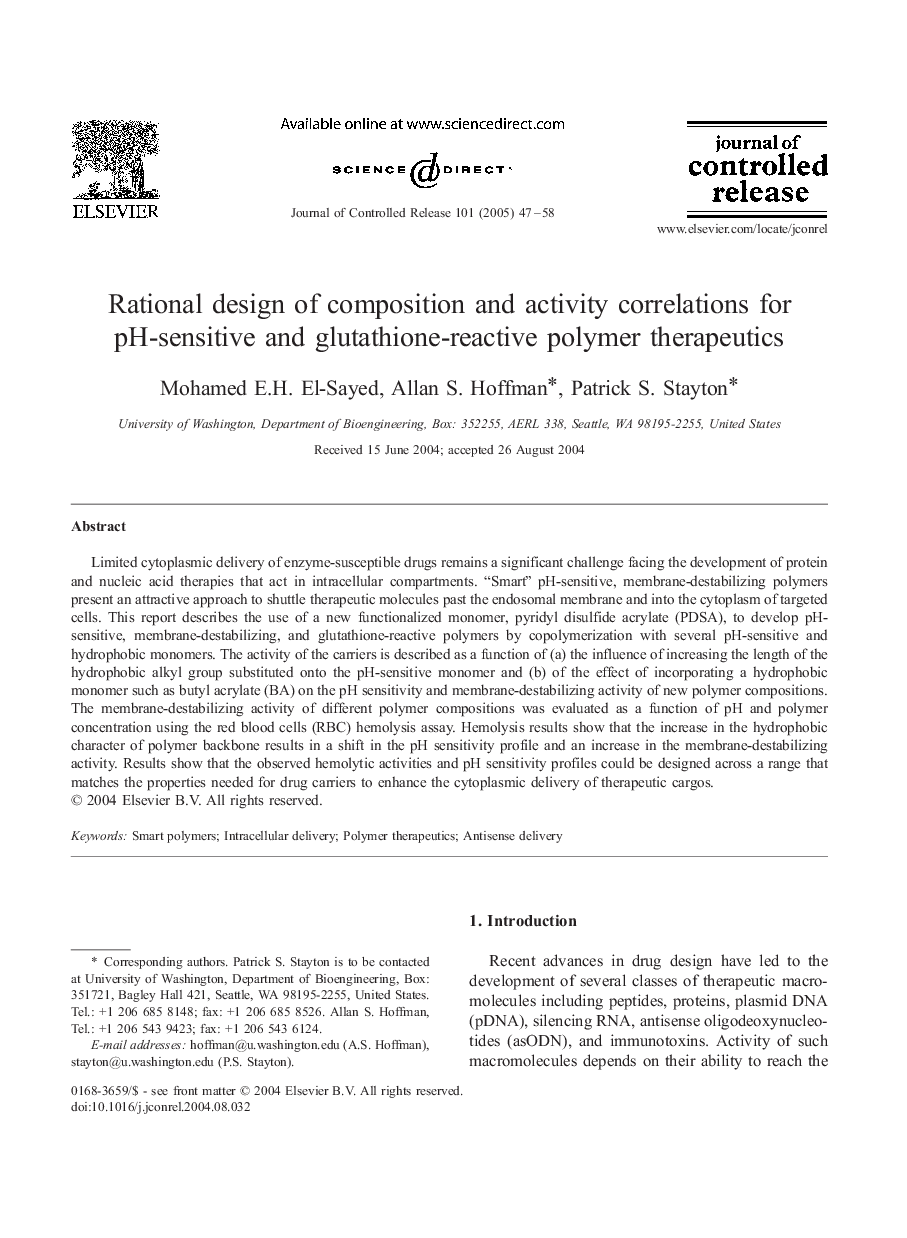| Article ID | Journal | Published Year | Pages | File Type |
|---|---|---|---|---|
| 9774694 | Journal of Controlled Release | 2005 | 12 Pages |
Abstract
Limited cytoplasmic delivery of enzyme-susceptible drugs remains a significant challenge facing the development of protein and nucleic acid therapies that act in intracellular compartments. “Smart” pH-sensitive, membrane-destabilizing polymers present an attractive approach to shuttle therapeutic molecules past the endosomal membrane and into the cytoplasm of targeted cells. This report describes the use of a new functionalized monomer, pyridyl disulfide acrylate (PDSA), to develop pH-sensitive, membrane-destabilizing, and glutathione-reactive polymers by copolymerization with several pH-sensitive and hydrophobic monomers. The activity of the carriers is described as a function of (a) the influence of increasing the length of the hydrophobic alkyl group substituted onto the pH-sensitive monomer and (b) of the effect of incorporating a hydrophobic monomer such as butyl acrylate (BA) on the pH sensitivity and membrane-destabilizing activity of new polymer compositions. The membrane-destabilizing activity of different polymer compositions was evaluated as a function of pH and polymer concentration using the red blood cells (RBC) hemolysis assay. Hemolysis results show that the increase in the hydrophobic character of polymer backbone results in a shift in the pH sensitivity profile and an increase in the membrane-destabilizing activity. Results show that the observed hemolytic activities and pH sensitivity profiles could be designed across a range that matches the properties needed for drug carriers to enhance the cytoplasmic delivery of therapeutic cargos.
Related Topics
Physical Sciences and Engineering
Materials Science
Biomaterials
Authors
Mohamed E.H. El-Sayed, Allan S. Hoffman, Patrick S. Stayton,
